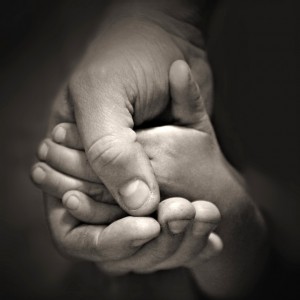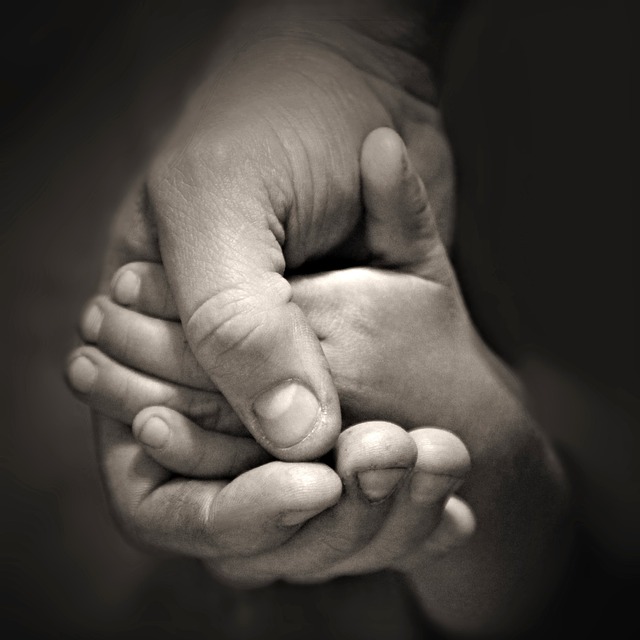
The tiny bundle of pink flesh, with the tightly clenched fists and eyes, emits a lusty cry, and suddenly, all faces are wreathed in smiles. The child is alive! It is the moment of greatest wonder, the revelation of the marvelous miracle of life.
What are the consequences of this momentous, life-affirming event? Let us look into this week’s portion. “When a woman conceives and gives birth to a male child . . . she shall remain in a state of impurity for seven days. And on the eighth day you shall circumcise the flesh of his foreskin.” These laws present a most perplexing anomaly.
Generally, we find the state of ritual impurity associated with the cessation or absence of life. Contact with a dead body, for instance, results in a state of impurity. But the moment of birth, the creation of a new life in the world, is the exact opposite condition. Why then does it cause a state of impurity?
Furthermore, immediately after informing us of the state of impurity deriving from the birth of a male child, the Torah tells that the child must be circumcised on the eighth day. Why? After all, this commandment has been established long before. In fact, it is the very first commandment in the entire Torah, given to Abraham back in Parashas Lech Lecha. Why then does the Torah find it necessary to remind us of it here?
In order to answer these puzzling questions, let us consider for a moment the birth of a child from a different perspective. Every person is a hybrid – a combination of the physical body and the spiritual neshamah. The physical body only has life in this world, a life that begins at conception, becomes viable birth and ceases at death. The neshamah, however, is eternal, a denizen of the spiritual world, a spark of the divine, without beginning, without end. Miraculously, Hashem combines these two totally incompatible elements into one creature called a human being.
How has this arrangement affected the neshamah? Has its condition improved or deteriorated? Has its life force been impaired or enhanced by this marriage made in Heaven?
The Sages tell us that the neshamah is taken from Hashem’s Heavenly Throne, that it is sent down to this world in a state of total purity, that as long as it is still within the womb it continues to enjoy the unrestrained radiance of the Divine Presence, that it continues to experience the entire Torah with perfect clarity, that it can observe the entire world from end to end with unrestricted vision.
At the moment of birth, however, everything suddenly changes. The neshamah’s vision becomes clouded and obscured by its physical envelope, its awareness of its origins is dulled and submerged, it knowledge of the Torah is forgotten. It is flung into a dirty, contaminated world and expected to fend for itself, to grope through the spiritual darkness of the physical world and find its way back home. The purpose of this abysmal plunge is clearly to allow the neshamah to create islands of holiness in this world under the most adverse conditions and thereby reach levels of holiness it could not attain in its pristine state. But for the moment at least, the neshamah has undergone a precipitous fall and a sharp decline in its spiritual vitality. This decline in its vitality, in its transcendent spiritual life force, which take place at the moment of birth, triggers a state of ritual impurity, the condition associated with the absence or loss of life.
But how is the neshamah to overcome the debilitating condition imposed? How is it to rise above the contamination of the physical world and find its way back to the Eternal Source of all neshamos?
To answer this question, the Torah reminds us once again that on the eighth day we are to circumcise the foreskin of the child. The removal of the foreskin, the “blockage,” from the organ of continuity demonstrates the striving to remove the physical barriers and blockages that separate the neshamah from Hashem. It demonstrates that our life’s journey, from its very beginning, is directed at overcoming the physical restriction to our innate spirituality and drawing ever closer to Hashem.
In our own lives, we sometimes need to take a step back and ask ourselves if we are allowing our neshamah to breathe or if we are burying it under an avalanche of physicality. After all, the only true, eternal, indestructible life we possess is the spiritual life of our neshamah. And if we concentrate on removing the physical “blockages” that restrict its spiritual consciousness and perception, we will be rewarded with a surge of spiritual vitality that will invigorate and enrich our entire lives. Text Copyright © 2008 by Rabbi Naftali Reich and Torah.org.
Rabbi Reich is on the faculty of the Ohr Somayach Tanenbaum Education Center.


